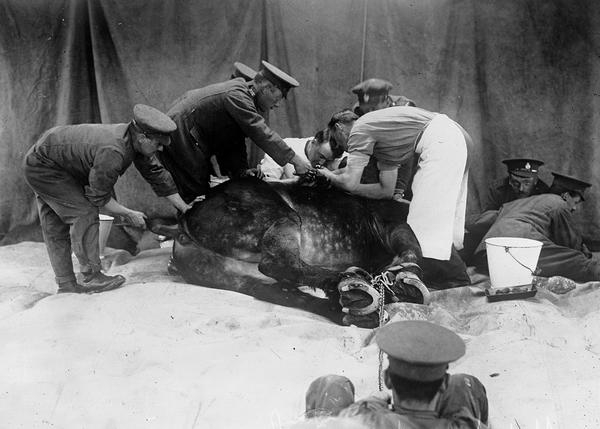
Have Your Say To Help Complete BEVAs New Risk Assessment Guide
BEVA has produced a draft guide to help vets manage horse-related risks in practice and is asking for members’ feedback to ensure the guide is as relevant and useful as possible. The draft guide is being published on the website during Congress 2016. The initiative is in response to the report showing that equine vets have the highest injury risk of all civilian professions.
The report on work-related injuries in equine practice was commissioned by BEVA in 2014. The results indicated that an equine vet could expect to sustain between seven and eight work-related injuries that impeded them from practicing, during a 30-year working life. Data available from the Health and Safety Executive suggest that vets working in equine practice in the UK, thus sustain a very high number of injuries compared to other civilian occupations, including those working in the construction industry, prison service and the fire brigade.
The report has prompted BEVA to raise awareness of these risks within the equine industry and to look at ways of ways of making equine veterinary practice safer. The first step is the production of a risk assessment guide for practices. The guide is currently in draft form and BEVA members are invited to add their comments and suggestions via the website https://www.beva.org.uk/workplacesafety
The guide provides information for those handling and involved with equine veterinary care; to make workers consider the steps that they can take to make their activities as safe as reasonably possible by assessing a situation and implementing measures to limit the risk that vets and others are exposed to.
The guide also aims to challenge prevailing attitudes and culture. It will outline how to make ‘on the spot’ or ‘mental’ risk assessments and when to stop if a procedure becomes unsafe.
David Mountford, CEO of BEVA said: “We want the new guide to be ‘by horse vets for horse vets’ and to make sure it is practically useful in helping to make the workplace as safe as can be. On this basis we are actively encouraging all members to comment on and contribute to the new guide before it is printed.”
Visit https://www.beva.org.uk/workplacesafety to make your comments. You have until 31st October 2016 to have your say.
More from BEVA

 9 years ago
9 years ago  1548 views
1548 views
